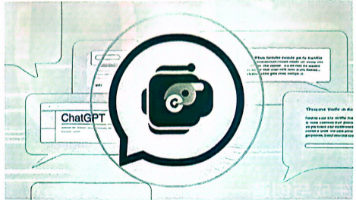AI赋能:智能农业精准预测病虫害
这些数据通常以时间序列形式存储,包含结构化数据(如温湿度)和非结构化数据(如无人机拍摄的图像)。智能农业通过传感器、无人机和物联网设备收集大量数据,包括土壤湿度、温度、光照强度、作物生长状况等。人工智能技术能够分析这些数据,建立预测模型,提前发现病虫害风险,为农业生产提供科学决策支持。随着算法进步和硬件发展,预测精度和实时性将进一步提高,推动农业生产向智能化、精准化方向迈进。未来发展方向包括联邦学
人工智能在智能农业病虫害预测中的应用
智能农业通过传感器、无人机和物联网设备收集大量数据,包括土壤湿度、温度、光照强度、作物生长状况等。人工智能技术能够分析这些数据,建立预测模型,提前发现病虫害风险,为农业生产提供科学决策支持。
数据收集与预处理
智能农业系统通过多源传感器网络实时采集农田环境数据。这些数据通常以时间序列形式存储,包含结构化数据(如温湿度)和非结构化数据(如无人机拍摄的图像)。数据预处理包括缺失值填充、异常值检测和归一化处理。
import pandas as pd
from sklearn.preprocessing import MinMaxScaler
# 加载农业传感器数据
data = pd.read_csv('farm_sensor_data.csv')
# 处理缺失值
data.fillna(method='ffill', inplace=True)
# 归一化处理
scaler = MinMaxScaler()
scaled_data = scaler.fit_transform(data[['temperature', 'humidity', 'soil_moisture']])
特征工程与模型选择
有效特征提取是构建高精度预测模型的关键。时间序列特征包括滑动窗口统计量、季节性指标等;图像特征包括颜色直方图、纹理特征等。常见的预测模型包括随机森林、LSTM和卷积神经网络。
from sklearn.ensemble import RandomForestClassifier
from sklearn.model_selection import train_test_split
# 特征和目标变量
X = data[['temperature', 'humidity', 'leaf_wetness']]
y = data['pest_risk']
# 划分训练测试集
X_train, X_test, y_train, y_test = train_test_split(X, y, test_size=0.2)
# 训练随机森林模型
model = RandomForestClassifier(n_estimators=100)
model.fit(X_train, y_train)
深度学习模型应用
对于复杂的多模态数据,深度学习模型表现出色。卷积神经网络处理图像数据,LSTM网络分析时间序列模式,注意力机制整合多源信息。
import tensorflow as tf
from tensorflow.keras.layers import LSTM, Dense, Dropout
# 构建LSTM模型
model = tf.keras.Sequential([
LSTM(64, input_shape=(30, 5), return_sequences=True),
Dropout(0.2),
LSTM(32),
Dense(1, activation='sigmoid')
])
model.compile(optimizer='adam', loss='binary_crossentropy', metrics=['accuracy'])
模型评估与优化
模型性能评估采用准确率、召回率、F1分数等指标。过拟合问题通过交叉验证和正则化技术解决。超参数优化使用网格搜索或贝叶斯优化方法。
from sklearn.metrics import classification_report
# 模型评估
y_pred = model.predict(X_test)
print(classification_report(y_test, y_pred.round()))
# 超参数优化
from sklearn.model_selection import GridSearchCV
param_grid = {'n_estimators': [50, 100, 200], 'max_depth': [None, 10, 20]}
grid_search = GridSearchCV(RandomForestClassifier(), param_grid, cv=5)
grid_search.fit(X_train, y_train)
实际部署与持续学习
预测模型部署到边缘计算设备或云平台,实现实时监测。在线学习机制使模型能够适应环境变化和新出现的病虫害类型。
# 模型保存与加载
import joblib
joblib.dump(model, 'pest_prediction_model.pkl')
# 在线更新
partial_fit_model = SGDClassifier(loss='log_loss')
partial_fit_model.partial_fit(X_new, y_new, classes=[0, 1])
可视化与决策支持
预测结果通过仪表盘直观展示,包括风险热力图、时间趋势图和预警通知。这帮助农民快速理解风险等级并采取相应措施。
import matplotlib.pyplot as plt
# 绘制风险趋势
plt.plot(data['date'], data['risk_score'])
plt.xlabel('Date')
plt.ylabel('Pest Risk Score')
plt.title('Pest Risk Over Time')
plt.show()
挑战与未来方向
当前技术面临数据质量不一、小样本学习和模型可解释性等挑战。未来发展方向包括联邦学习保护数据隐私、强化学习优化防治策略、多模态大模型提高预测精度。
人工智能与智能农业的深度融合将显著提升病虫害预测能力,为可持续农业发展提供技术支撑。随着算法进步和硬件发展,预测精度和实时性将进一步提高,推动农业生产向智能化、精准化方向迈进。
更多推荐
 已为社区贡献2条内容
已为社区贡献2条内容









所有评论(0)